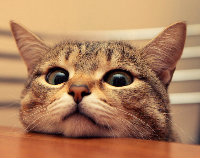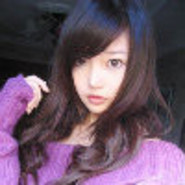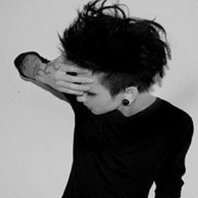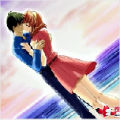Q
What's the Size of Honda City Hatchback's Rim?
The rim size of the Honda Fit Hatchback varies according to the model and trim. For the 2024 Honda Fit Hatchback 1.5 S and 1.5 E, the rim size is 15 inches, and the tire specifications for both the front and rear are 185/60R15. The 1.5 V, 1.5L RS, and RS e:HEV versions are equipped with 16-inch rims, and the tire size for both the front and rear wheels is 185/55 R16. Different rim sizes can have an impact on the vehicle's appearance, handling, and ride quality. In some cases, larger rims may enhance the car's look and offer better handling, while smaller rims might provide a more comfortable ride and potentially better fuel efficiency.
Special Disclaimer: This content is published by users and does not represent the views or position of PCauto.
Related Q&A
Q
What's the Reslae Value of Honda City Hatchback?
The resale value of the Honda City Hatchback is influenced by multiple factors, including the vehicle's age, condition, mileage, market demand, and configuration version. Generally speaking, Honda models have an above - average resale rate in the local market.
Take the City Hatchback launched in 2021 as an example. The new car price of the entry - level 1.5 S is about RM75,000. After three years of use, the second - hand price is approximately between RM55,000 and RM60,000 (depending on the vehicle's condition), which means it retains about 70% - 75% of its original value. If you choose the higher - spec V or RS versions, the residual value may be slightly higher, but it is also affected by mileage and maintenance records.
The Honda brand is quite popular in the Malaysian second - hand car market, especially the City series with a vehicle age of less than five years. Due to its fuel economy and reliability, there is a consistent demand for them. It is recommended that before selling your car, you ensure regular maintenance, keep a complete maintenance record, and refer to the recent transaction prices of the same model to get a more reasonable second - hand valuation. However, the actual price still depends on market fluctuations and the buyer's bargaining situation.
Q
What's the Engine Displacement of Honda City Hatchback?
The Honda City is available in both gasoline and gasoline hybrid (HEV, MHEV) versions. All models are equipped with an engine with a displacement of 1498cc, which is equivalent to 1.5 liters. This engine size strikes a balance between power and fuel efficiency, making it suitable for daily commuting and various driving needs.
The 1498cc gasoline engine can deliver a maximum power of 121 horsepower and a peak torque of 145 Nm. It is paired with a Continuously Variable Transmission (CVT) that enables smooth gear shifts.
In the gasoline hybrid RS e:HEV model, the 1498cc engine works together with an electric motor. The engine has a maximum power of 98 horsepower and a torque of 127 Nm, while the electric motor provides an additional 109 horsepower and 253 Nm of torque. The combined power output offers better acceleration performance.
Q
What Engine Is Equipped by Honda City Hatchback?
The two - door version of the Honda Fit offers different engine options. Some models are equipped with a 1.5 - liter naturally aspirated gasoline engine, with a naturally aspirated (NA) intake system. The engine has a displacement of 1,498 cc, generating a maximum power of 89 kW at 6,600 rpm and a peak torque of 145 Nm at 4,300 rpm, with a maximum horsepower of 121 hp. The vehicle is also equipped with a continuously variable transmission (CVT).
There is also the RS e:HEV model. It is equipped with a 1.5 - liter gasoline engine and a hybrid system. The engine itself can produce a maximum power of 72 kW at 5,600 - 6,400 rpm and a torque of 127 Nm at 4,500 - 5,000 rpm, with a maximum horsepower of 98 hp. The electric motor can provide a total power of 80 kW, a torque of 253 Nm, and a maximum horsepower of 109 hp. The battery type is a lithium - iron phosphate battery with a capacity of 1.3 kWh, and it uses an electronic continuously variable transmission (E - CVT). These engines strike a balance between performance and fuel economy to meet various driving needs.
Q
What's the Type of Honda City Hatchback's Gearbox?
The type of the Honda City's gearbox varies depending on the model and its powertrain. For gasoline-powered models, the transmission type is CVT (Continuously Variable Transmission), providing a smooth driving experience by continuously adjusting the gear ratio, which helps optimize fuel efficiency and power output according to different driving conditions.
For hybrid models like the Honda City RS e:HEV, it is equipped with an E-CVT (Electronically Controlled Continuously Variable Transmission). The E-CVT is specifically designed for hybrid vehicles. It coordinates the power output between the engine and the electric motor, allowing smooth switching between different driving modes such as pure electric drive, engine drive, and hybrid drive, thereby enhancing the overall efficiency and performance of the hybrid system.
Q
What's the PCD Size of Honda City Hatchback?
The PCD (Pitch Circle Diameter) of the Honda City Hatchback is 5x114.3, which means the wheel's bolt holes are arranged in a circle with a diameter of 114.3 mm and consist of 5 bolt holes. This specification is the same as that of the Honda Jazz, certain City Sedan variants, and some mainstream Japanese models in the Malaysian market (such as the Toyota Vios and Nissan Almera), providing ample options for wheel upgrades or replacements.
When changing wheels or tires, owners should not only consider the PCD but also ensure compatibility with the center bore (CB) size, offset, and tire specifications to maintain safety and handling stability. If upgrading to larger or more customized wheels, it is advisable to consult a professional tire shop or an authorized Honda service center to avoid purchasing unsuitable rims that could compromise driving safety.
Q
Does Honda City Hatchback Support Apple Carplay?
The Honda City is equipped with Apple CarPlay. The all-new 2024 Honda Fit hatchback has been launched in Malaysia. The vehicle features an 8-inch multimedia touchscreen on the center console, which supports wireless connection with Apple CarPlay and Android Auto, allowing users to connect their iPhones to the car's infotainment system. Once connected, drivers can directly access various functions of their iPhones, such as navigation, music playback, making calls, and sending text messages, through the car's touchscreen or voice control. By integrating the familiar iPhone interface with the vehicle system, it enhances the in-car experience. This is a very convenient feature for those who rely on their iPhones for various daily tasks and want to achieve seamless connectivity while driving.
Q
What's the Brand of Honda City Hatchback's Tire?
The factory-fitted Honda City Hatchback in the Malaysian market is primarily equipped with Yokohama's BluEarth-GT series tires (specifically 185/55 R16 or 185/60 R15, depending on the variant). These tires emphasize fuel efficiency, durability, and wet-road safety, aligning with the City Hatchback's positioning as an economical family car. However, depending on the production year or promotional packages, some vehicles may be equipped with tires of other brands such as Dunlop or Bridgestone. The exact tire model should be verified based on the factory configuration at the time of purchase.
For owners looking to replace their tires, other brands in the same specification—such as Michelin Energy XM2+ or Continental CC6—can be considered. These are popular energy-saving and comfort-oriented tire options in the Malaysian market, offering a balance between fuel efficiency and quiet performance. Regular checks on tire wear and pressure are recommended, along with adhering to the manufacturer's suggested replacement intervals to ensure driving safety.
Q
Is Honda City Hatchback a Good Car? Learn the Pros and Cons Here
The Honda City Hatchback has many advantages and is a great car. In terms of appearance, it features a delicate, stylish, and sporty design. For instance, some models are equipped with a honeycomb radiator grille and an added rear spoiler. The RS version also has unique trim panels and side skirts, making it highly recognizable. The interior details have been optimized. The RS version has an all - black interior. In some models, the instrument panel has been upgraded to a 4.2 - inch TFT color screen. The central control touch - screen host is 8 inches, and the pixels of the rear - view camera have been improved.
In terms of safety and intelligent assistance, the entire vehicle lineup comes standard with multiple safety systems, such as ABS anti - lock braking, vehicle stability control, lane departure warning, and autonomous emergency braking. There's also an ISO FIX child seat interface. Some models are equipped with the Honda Sensing function, providing comprehensive protection for the driver. Additionally, some models have added practical features like wireless CarPlay and a wireless charging panel.
In terms of power, there are multiple options. The 1.5L naturally aspirated engine paired with a CVT transmission offers a smooth power output, which is sufficient for daily driving. The hybrid system in the e:HEV RS model delivers excellent power and has relatively low fuel consumption. However, it also has some drawbacks. For example, the rear brakes of some models are drum brakes, which are slightly inferior to disc brakes in terms of braking performance. The rear - seat space may feel a bit cramped for taller passengers. Overall, the Honda City Hatchback performs well in terms of appearance, safety, and power, and can meet the daily needs of most users.
Q
What's the Width of Honda City Hatchback?
The Honda City has a width of 1,748 millimeters. This B-segment hatchback offers a comfortable interior space for passengers, and its width helps create a spacious cockpit, providing sufficient shoulder room for both front and rear passengers and enhancing the overall comfort during the drive. Whether it's a short trip around the city or a long-distance journey, this width ensures a more enjoyable driving and riding experience. Moreover, the vehicle's width also plays a certain role in its overall stability and handling on the road.
Q
What's the Road Tax of Honda City Hatchback? How to Calculate It?
The Honda City Hatchback provides petrol and hybrid versions, and the road tax calculation methods vary for different versions. For the petrol version, since its displacement is 1498cc, which is less than 1800cc, according to regulations, it is required to pay 75% excise duty. The specific amount of road tax needs to be comprehensively calculated in combination with the actual value of the vehicle and other factors. Generally speaking, the road tax price to be paid is calculated by multiplying the vehicle value by the 75% excise duty rate and then adding other possible tax items (such as the normal 10% sales tax, which has been waived during the current pandemic).
As for the hybrid version, currently all electric vehicles (including hybrids) registered in Malaysia are exempt from road tax. The tax - exemption period will expire at the end of 2025. Starting from January 1st, 2026, a new policy will be implemented. The road - use tax rate for electric vehicles will be divided into different levels according to engine power: for vehicles with an engine power below 100kW, for every additional 10kW of power, the tax increases by 10 ringgit; for vehicles with an engine power between 100kW and 210kW, for every additional 10kW of power, the tax increases by 20 ringgit; for electric vehicles with an engine power between 210kW (excluding 210kW) and 310kW, for every additional 10kW of power, the tax increases by 30 ringgit. Therefore, the road tax for the Honda City Hatchback hybrid version after 2026 needs to be calculated based on its specific engine power.
Latest Q&A
Q
How big is Myvi fuel tank?
As one of the most popular national cars in Malaysia, the fuel tank capacity of the Perodua Myvi varies according to different generations and versions. The standard fuel tank capacity of the current third - generation Myvi (from 2017 to present) is 36 liters. It features a lightweight resin fuel tank design, which balances the fuel storage needs and the vehicle's body weight.
The fuel tank size of this B - segment model matches the fuel economy of its 1.3L/1.5L engines. It can provide a cruising range of approximately 450 - 550 kilometers under combined driving conditions, making it suitable for urban commuting and short - distance trips. It's worth noting that the actual available fuel tank capacity might be slightly less than the nominal value. This is because about 5% of the tank space is reserved for fuel expansion as a safety measure.
For owners planning long - distance drives, it is recommended to use the fuel efficiency display function on the Myvi's dashboard to monitor fuel consumption in real - time. Also, it's advisable to develop the habit of refueling when the fuel gauge shows that there is about 1/4 of the fuel left. This can prevent the fuel pump from overheating and also help deal with the situation where gas stations are far apart in some remote areas of Malaysia.
Some comparable models in the same segment, like the Proton Iriz, have a 40 - liter fuel tank. However, the actual cruising range needs to be considered in combination with the engine efficiency. Thanks to Perodua's mature powertrain tuning, the Myvi always maintains a competitive edge in terms of fuel economy.
Q
Does Myvi use CVT?
Yes, the Perodua Myvi does use CVT (Continuously Variable Transmission) technology in some models, especially the newer ones. For instance, the third-generation Myvi, launched in 2017, and its subsequent versions are equipped with D-CVT (Dual Mode Continuously Variable Transmission) to offer a smoother driving experience and better fuel efficiency. CVT technology optimizes engine performance through continuously variable gear ratios. Compared with traditional automatic transmissions, it can adapt to driving conditions more flexibly, thereby enhancing overall driving comfort. However, earlier Myvi models may have used a traditional 4-speed automatic transmission. So, whether a specific model is equipped with a CVT needs to be confirmed based on the model year and configuration. For Malaysian consumers, the advantages of CVT lie in its smoothness and fuel - saving performance during city driving, which is very suitable for the common local traffic conditions. But if you're looking for more direct power feedback, some drivers may prefer the manual transmission version. If you're considering buying a Myvi, it's recommended to check the official specifications or consult a dealer to confirm the transmission type. You can also take a test drive to see if the actual performance of the CVT meets your driving preferences.
Q
What kind of gearbox is Myvi?
The Myvi is equipped with a Dual Mode CVT (D-CVT) transmission, which is a dual-mode continuously variable transmission. Compared with traditional CVT transmissions, it has an additional gear for high-speed driving, which helps the vehicle achieve better fuel efficiency.
In daily driving, this transmission drives the vehicle in CVT mode. Thanks to the operation of the steel belt, the vehicle moves smoothly and linearly, enhancing comfort. What makes the D-CVT special is that it automatically switches to the gear mode when driving at high speeds. Different from CVT transmissions of other brands, when driving at high speeds, the engine speed of vehicles with ordinary CVT transmissions will increase, the engine noise will get louder, and the fuel consumption will rise. Moreover, the power will decline after exceeding the maximum horsepower speed. However, after the gear of the D-CVT engages, the engine speed decreases, allowing the engine to maintain a reasonable speed and providing the vehicle with continuous and abundant power.
Q
Are Myvi and vios the same engine?
Some models of the Myvi and the Vios use the same engine. Daihatsu and Perodua have a joint - venture engine production plant in Negeri Sembilan, Malaysia, which provides power for multiple models including the Vios. Some models of the Vios and the Myvi are equipped with the 1.5L Dual VVT - i engine. This engine features high efficiency, reliability, and economy. Although its power is not extremely strong (the official 0 - 100km/h acceleration time of the Myvi 1.5 is 10.2 seconds), its low fuel consumption and durability are well - loved by consumers. However, these two cars have different positioning and market targets. Even if they share the engine platform, there are differences in vehicle tuning, configuration, and the overall driving experience.
Q
How many cylinders are in the MYVI?
As one of the most popular national cars in Malaysia, the engine configurations of the Perodua Myvi vary according to different years and versions. Currently, the mainstream models are equipped with two types of Dual VVT - i four - cylinder naturally aspirated engines, namely the 1.3L (1NR - VE) and 1.5L (2NR - VE). Therefore, all Myvi models feature a four - cylinder design. This four - cylinder layout ensures smooth power delivery while taking fuel economy into account, making it highly suitable for the urban road conditions in Malaysia.
It's worth mentioning that four - cylinder engines, due to their simple structure and low maintenance costs, are widely used in B - segment models in the local market. For example, the Proton Saga and Honda City also adopt a similar layout. The 1.5L version of the Myvi can output 102 horsepower and 136 Nm of torque. Coupled with its lightweight body design, it can offer a well - balanced performance whether driving on the congested streets of Kuala Lumpur or cruising on the highway.
For readers who want to learn about engine technology, they can note that the Dual VVT - i system used in the Myvi can intelligently adjust the valve timing. This technology shared by Toyota helps to improve fuel efficiency by about 15%. That's why the Myvi has remained one of the most fuel - efficient cars in Malaysia for years.
View MoreRelated News

Is Honda City Hatchback Still Worth Buying in 2025?
JohnJun 26, 2025

High Cost-Performance: Is the Honda City Hatchback Worth Buying? Dynamic Experience Revealed!
AshleySep 23, 2024

From Jazz to City Hatchback: The Perfect Transformation of Honda Hatchback
LienJun 4, 2024

Honda City e HEV Hatchback RS: Fuel Efficiency
AshleyMay 4, 2024

The 2025 Honda Prelude Is Back: Hybrid-Powered Coupe with Type R Chassis Tech
JohnAug 4, 2025
View More













 Cars
Cars




Pros
Cons